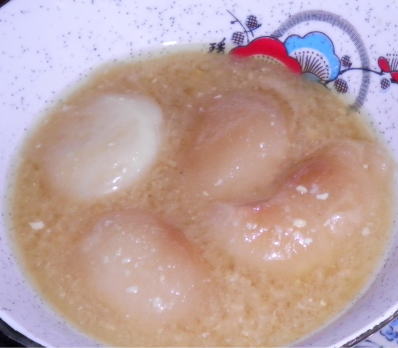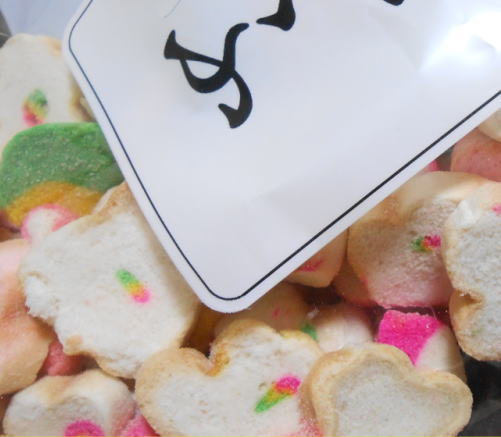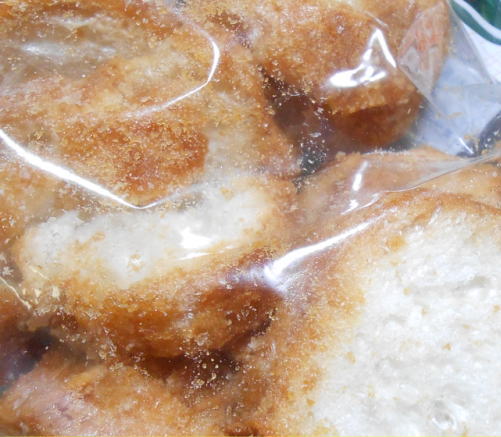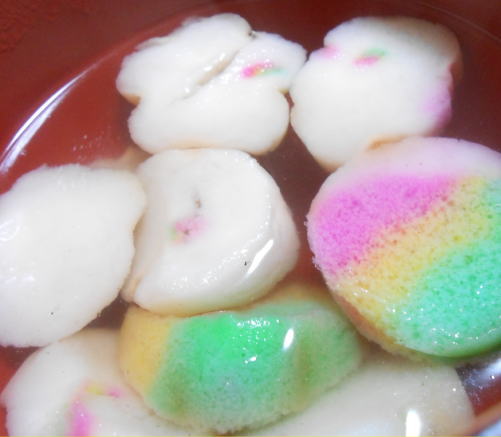Last update September 4, 2025
Japanese Food - Fu -

Fu
ふ, 麩
Wheat Gluten
Featuring a little bit of that Mochi Mochi Kan (the similar sensation of a rice cake), it’s so soft and elastic that your teeth pleasantly sink into the texture. And so lovely colours and shapes that you may think it a shame to consume them! Some are shaped in light pink cherry blossoms and others in yellow-green leaves. Those are Nama Fu (wet-type Fu) in Kyoto. Dating back to the Muromachi Period (1334 - 1573), Fu was a vital protein source for monks, who couldn’t eat animal-derived foods. In addition to the wet type, there are baked (called Yaki Fu) and dry ones. Wet ones are used in soups or Nimono or even served as a dessert. Dry or baked ones become an ingredient in soups or other dishes like Sukiyaki.

Dry-type Fu added in Miso soup.
|

Dry-type Fu product.
|

Yaki Fu product.
|

Yaki Fu as an ingredient in Sukiyaki.
|

Flowery Fu in Sumashi Jiru (clear soup).
|
|

Dry-type Fu added in Miso soup.

Dry-type Fu product.

Yaki Fu product.

Yaki Fu as an ingredient in Sukiyaki.

Flowery Fu in Sumashi Jiru (clear soup).
|
|






















